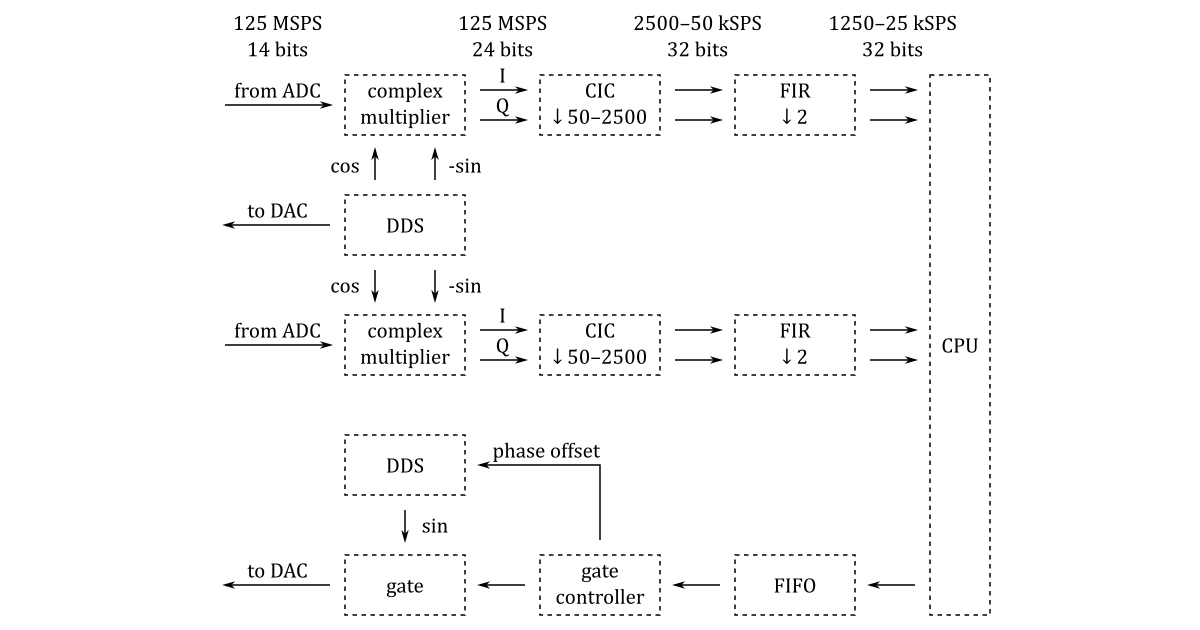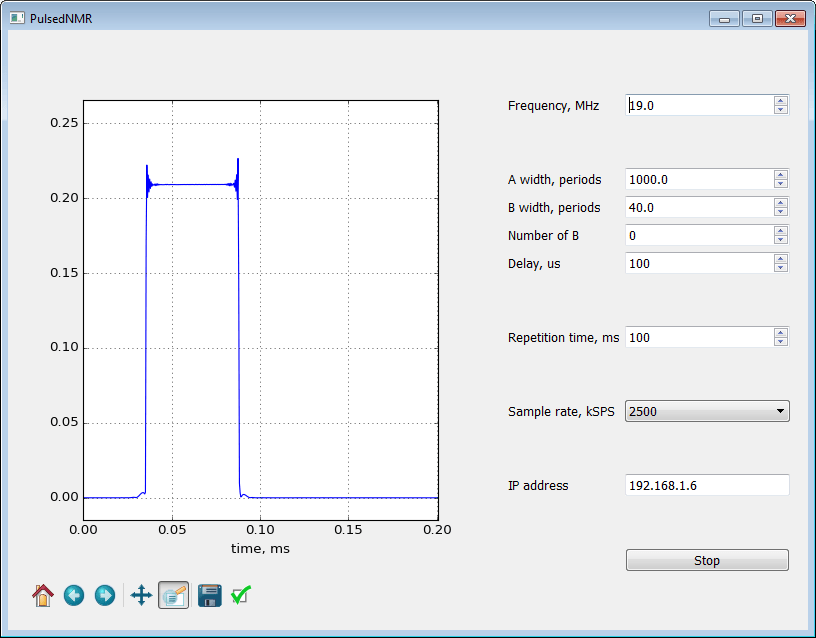Pulsed NMR system
This is a work in progress...
Interesting links
Some interesting links on pulsed nuclear magnetic resonance:
The Basics of NMR by Joseph P. Hornak
Short description
The system consists of one in-phase/quadrature (I/Q) digital down-converter (DDC) and of one pulse generator.
The tunable frequency range covers from 0 Hz to 60 MHz.
The I/Q data rate is configurable and six settings are available: 25, 50, 125, 250, 500, 1250 kSPS.
Hardware
The basic blocks of the system are shown in the following diagram:

The projects/pulsed_nmr directory contains three Tcl files: block_design.tcl, rx.tcl, tx.tcl. The code in these files instantiates, configures and interconnects all the needed IP cores.
Software
The projects/pulsed_nmr/server directory contains the source code of the TCP server (pulsed-nmr.c) that receives control commands and transmits the I/Q data streams (up to 4 x 32 bit x 1250 kSPS = 152 Mbit/s) to the control program running on a remote PC.
The projects/pulsed_nmr/client directory contains the source code of the control program (pulsed_nmr.py).

Getting started with GNU/Linux
- Download SD card image zip file (more details about the SD card image can be found at this link).
- Copy the contents of the SD card image zip file to a micro SD card.
- Optionally, to start the application automatically at boot time, copy its
start.shfile fromapps/pulsed_nmrto the topmost directory on the SD card. - Install the micro SD card in the Red Pitaya board and connect the power.
- Install required Python libraries:
sudo apt-get install python3-numpy python3-matplotlib python3-pyqt5- Clone the source code repository:
git clone https://github.com/pavel-demin/red-pitaya-notes- Run the control program:
cd red-pitaya-notes/projects/pulsed_nmr/client
python3 pulsed_nmr.pyBuilding from source
The installation of the development machine is described at this link.
The structure of the source code and of the development chain is described at this link.
Setting up the Vitis and Vivado environment:
source /opt/Xilinx/2025.1/Vitis/settings64.shCloning the source code repository:
git clone https://github.com/pavel-demin/red-pitaya-notes
cd red-pitaya-notesBuilding pulsed_nmr.bit:
make NAME=pulsed_nmr bitBuilding SD card image zip file:
source helpers/build-all.sh